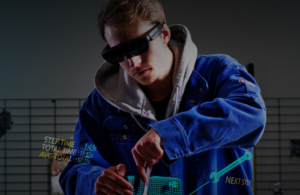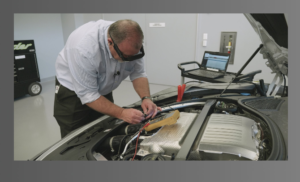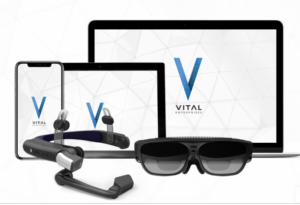Augmented reality, virtual reality industry game changers

Virtual reality and augmented reality technologies in the mechanical sector are designed to offer contractors a leg up, namely saving time in the field.
Edmonton, AB-based ScopeAR has developed AR technology that lends itself to the mechanical industry–though, the company’s clientele is primarily in manufacturing and aerospace, according to Scott Montgomerie, the founder, CEO and chief technology officer. Despite the benefits, he said the HVAC industry has been less receptive.
“Businesses that don’t adapt to new technologies are going to get left behind by a company that is,” he added.
Since 2011, ScopeAR has rolled out two augmented reality products in the space: Remote AR and WorkLink. The former has the ability to connect remote workers, such as a contractor in the field troubleshooting a piece of HVAC equipment, with an expert through a digital app.
“With our tool, you would be able to circle [a] red wire with a line in 3D space [for example],” Montgomerie explained. That circle is then visible to the expert in real-time. “It enhances that ability to communicate between that person with knowledge and technicians,” he added. WorkLink, on the other hand, allows the user to create “smart instructions,” as opposed to paper instructions, in augmented reality
“What that means is essentially overlaying rich 3D models on top of a piece of equipment to show you step by step how to do something,” Montgomerie said. “If you’re looking at a wiring panel on a furnace, you can actually see a 3D illustration of the circuit board with 3D representations of the wires, the layout. It’s really intuitive.”
In a 2016 study out of the University of Connecticut, former PhD candidate Rajeev Ghimire–now an electrical engineer–found that augmented-reality based troubleshooting of HVAC systems allowed technicians to improve efficiency on the job.
At the time, he said the school had difficulties troubleshooting equipment, with technicians often unable to determine the cause of malfunction or failure. For the study, technicians performed tests and repairs on equipment while wearing the Epson Moverio BT-200 and Google Smart Glass AR glasses.
“The idea was to use augmented reality-based smart glasses to help the repair technicians collectively do the guided troubleshooting first,” Ghimire said, with the second component of the study being the repair process.
The technology allowed technicians to be more efficient, ultimately minimizing the system’s downtime and eliminating the need for manuals and other paperwork.
“There is a lot of attention on this one in repair and maintenance industry, whether it be HVAC system or any other complex cyber-physical system, complex engineering system,” Ghimire said. “I hope to see this one come to industry sooner than later. This is a very promising technology.”
Read the full article here.








